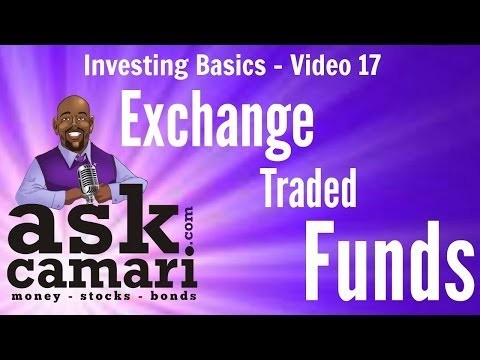Exchange Traded Funds ETF Basics Price
Post on: 10 Апрель, 2015 No Comment

What They Are
Exchange-traded funds (ETFs) are a kind of hybrid between a mutual fund and an individual security. They were developed in 1993 as a new way to invest in the securities of an index and since have become a popular investment option growing to $1.7 Trillion (as of February 2014, according to the Investment Company Institute). ETF shares represent a basket of stocks or bonds. The financial firm sponsoring the ETF compiles a portfolio of securities and places it into a specially structured account; in exchange, the firm receives a block of shares (similar to a fund’s shares) of equal value. The firm then sells those shares in the form of a single security to investors on the open market.
How They Work
ETF shareholders are entitled to a proportionate amount of any income, capital gains, or losses realized by the underlying portfolio, the value of which is reflected in the ETF’s share price. The share prices are linked to the value of the underlying portfolios. An ETF’s actual share price, however, is determined by market supply and demand, just like the price of an individual stock or bond. Therefore, an ETF’s share price may vary somewhat from the market value of the securities in the portfolio.
Although there are ETFs that represent actively managed portfolios, most ETFs are passively managed index funds and have principally become popular as a way to gain exposure to a wide variety of market indexes.
Like index mutual funds, passively managed ETFs can offer broad diversification, low fees, and tax efficiency. But unlike index funds, ETF shares can be traded on the major exchanges like individual securities. Generally, net asset values (NAVs) for index mutual funds are updated once per day, and investors can only buy or sell mutual fund shares at the NAV price regardless of market activity. If the market declines drastically over the course of a trading day, investors can only exit the fund at the NAV price, which is set at the close of trading.
A typical S&P 500 ETF, for example, is backed by a portfolio that invests in the stocks contained in the S&P 500 Index, and is designed to replicate the performance of that index. However, ETFs are not limited to the U.S. blue chip stock market. Investment companies have developed ETFs that represent various bond markets, non-U.S. indexes, and market sectors. At some point, they might also represent actively managed portfolios. However, actively managed ETFs have been slow to develop. ETFs can only function properly if the contents of their underlying portfolios are continuously available to the market. Most active managers prefer not to reveal daily portfolio changes in order to avoid market front-running (a practice in which investors load up on shares of companies that large mutual funds purchase, thereby making the trades more costly for the fund firms), which can diminish potential returns for fund investors.*
What Makes Them Unique
Today’s ETFs are similar to index funds in that they constitute a single investment providing access to a diversified index portfolio. ETFs are different in that they trade on an exchange like a stock or bond. For that reason, ETFs have a number of unique properties:
- ETFs are traded freely on the open market, and their prices respond quickly to market activity.
- You can place stop and limit orders on ETFs (if permitted by your broker), sell ETFs short (subject to exchange rules), or buy ETFs on margin (with borrowed money).
- Trades in ETFs incur commissions and possibly other brokerage fees.
- Generally, ETFs have low management fees.
- ETFs typically provide high tax efficiency because they have low portfolio turnover.

The Potential Risks and Rewards of ETFs
Their qualities make ETFs attractive to many investors, but there can be disadvantages for some investors. See “The Potential Risks and Rewards of ETFs” to learn more.
Contact T. Rowe Price Brokerage to request a prospectus, which contains investment objectives, risks, fees, expenses, and other information that you should read and consider carefully before investing. To request a prospectus for an exchange-traded fund or non-T. Rowe Price fund, please call 1-800-225-7720.
To open an account or for more information about T. Rowe Price or T. Rowe Price Brokerage, please call 1-800-638-5660 .
*Leveraged ETFs can be complex and may carry substantial risk. Many leveraged and inverse leveraged ETFs are designed for short-term trading since they reset daily and seek to achieve their return objectives on a daily basis. Performance may differ from the performance of the underlying index and may not meet the performance expectations that may be suggested by their names. For more information, you should consult the website of the issuer of the ETF you are considering.
T. Rowe Price Brokerage is a division of T. Rowe Price Investment Services, Inc. member FINRA/SIPC. Brokerage accounts are carried by Pershing LLC, a BNY Mellon company, member NYSE/FINRA/SIPC.














